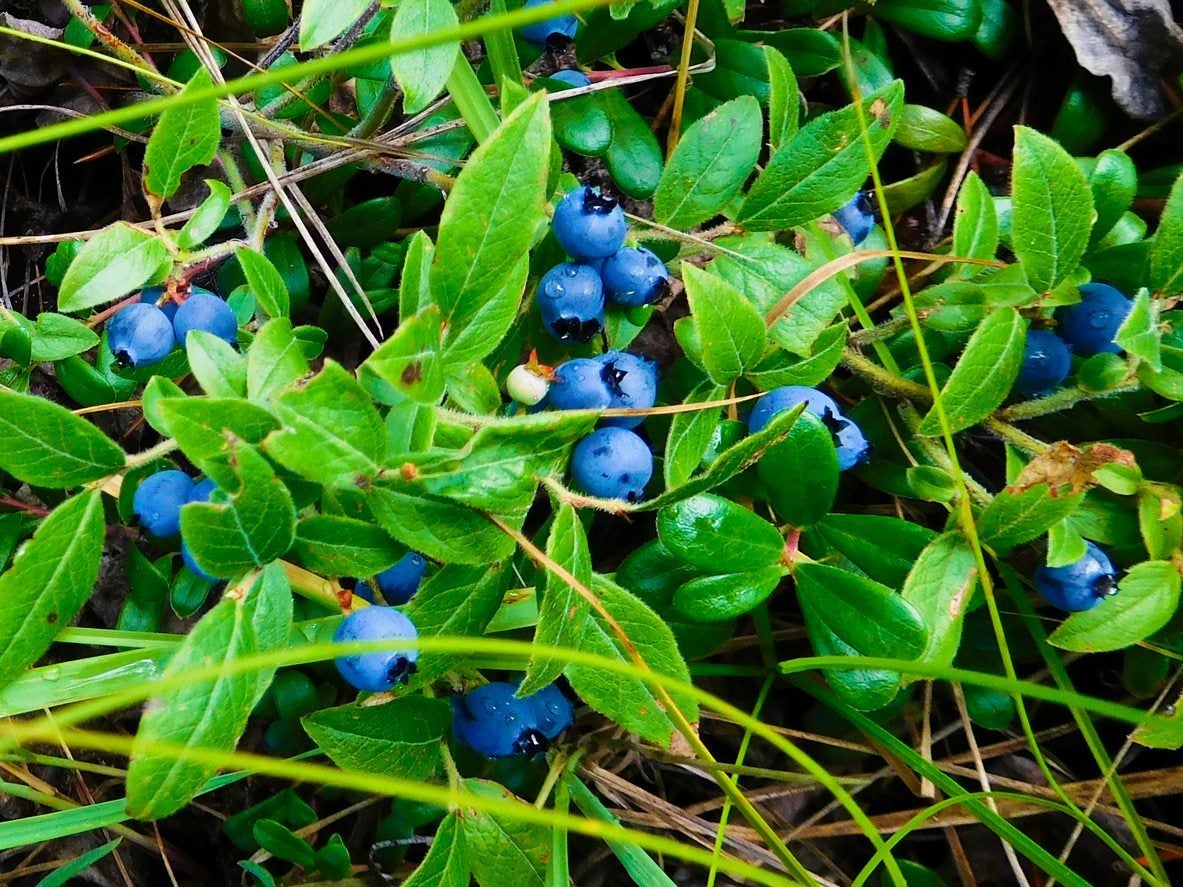What Is A Lowbush Blueberry – How To Grow Lowbush Blueberries

Most of the blueberries you see in grocery stores are from highbush blueberry plants (Vaccinium corymbosum). These cultivated blueberries have a less common, delightful cousin – the wild or lowbush blueberry. Its small but very flavorful berries are almost candy sweet, with an intense blueberry flavor. Although lowbush blueberries are typically found growing in the wild or on farms in a few U.S. states and Canadian provinces, it is also possible to grow them in a home garden. That is, if you can provide the specialized growing conditions they need.
What is a Lowbush Blueberry?
Lowbush blueberries (Vaccinium angustifolium) are often harvested in the wild, where they are found growing in sandy forest clearings and meadows and near the edges of bogs. Lowbush blueberries are also grown in semi-wild patches that are managed by blueberry harvesters. Most lowbush blueberries are produced in Maine, New Brunswick, Quebec, and Nova Scotia. Gardeners in a wider geographical region can grow them on a small scale.
Lowbush Blueberry Information
Lowbush blueberries are very cold-hardy plants, and most varieties grow in zones 3 to 6. Some varieties can grow in zone 2 or in zone 7. Like highbush blueberries and other plants in the heather family, lowbush blueberries are acid-loving. They require soil that is high in organic matter, and they’ll grow best in sandy, well-drained soil. Each plant can grow to between 6 and 24 inches (15-61 cm.) tall, depending on its genetics and growing site. They can, therefore, be used as a low-maintenance groundcover. The plants typically flower in spring, and the berries are ready to pick in mid to late summer. Wild blueberries are smaller than cultivated highbush blueberries, but their flavor is more concentrated.
How to Grow Lowbush Blueberries
The best sign that your land is suitable for lowbush blueberries is that you’ve found some already growing there. In that case, remove surrounding vegetation to encourage them to spread. Growing lowbush blueberry plants from seed or rhizomes, either purchased or collected in the wild (your own property or with permission granted), is possible too. Plant rhizomes or seedlings 8 inches (20 cm.) apart in well-drained soil amended with peat, compost, or sawdust. Amend the soil to a pH of 4.5 to 5.2 using sulfur or ammonium sulfate. Keep the plants watered during the growing season. Remove the flowers from each plant for the first year or two to ensure strong growth of the roots. Flowers are produced on second year growth. Lowbush blueberry care includes pruning every other year to maintain berry production. Prune just after harvest to remove older, less productive growth. You may also need to prune around the edges of your patch to control the plants’ spread. Large plantings can be renovated by mowing them in the fall after they shed their leaves. Fertilize the blueberries yearly with an azalea/rhododendron fertilizer or another source of soluble ammonium and with a magnesium source.
Gardening tips, videos, info and more delivered right to your inbox!
Sign up for the Gardening Know How newsletter today and receive a free copy of our e-book "How to Grow Delicious Tomatoes".
Ilana Goldowitz Jimenez is a scientific and agricultural writer with a B.S. in Plant Sciences from Cornell University and a PhD in Chemical Biology and Infectious Disease from Harvard University.
-
 Looking For Plants To Give You The Soft And Fuzzies? Try These 5 Fuzzy Leaf Plant Options
Looking For Plants To Give You The Soft And Fuzzies? Try These 5 Fuzzy Leaf Plant OptionsLovers of texture, drama, silver foliage and tactile plants will adore these special sensory garden additions. These fuzzy leaf plant options will leave you all aglow
By Susan Albert
-
 Get Ready For A Summer Of Hummers! Grow These Full Sun Hummingbird Plants and Flowers
Get Ready For A Summer Of Hummers! Grow These Full Sun Hummingbird Plants and FlowersIf you’re lucky enough to enjoy a sunny backyard, make sure you are maxing out on your pollinator opportunities and grow these full sun hummingbird plants and flowers
By Tonya Barnett